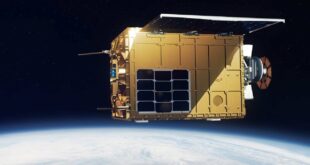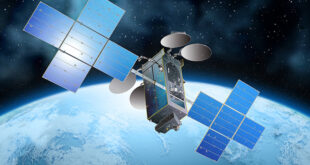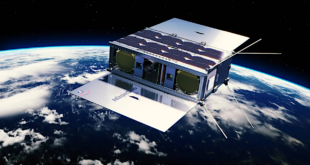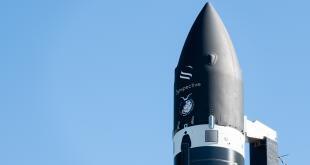Starfish Space announced on the 8th of August that it has been awarded $1.8 million by AFWERX, the innovation arm of the Department of the Air Force, to support continued development of the Cephalopod software for satellite guidance, navigation, and control.
Read More »#SpaceWatchGL Summer Listening Series: Week Two – Climate, Space and Earth
Summer is upon us, and as our gaze shifts towards the stars during those warm, clear nights, SpaceWatch.Global brings you its second collection or the Summer Listening Series. Based on the vote by our newsroom, we have mapped out an interstellar journey across five categories. This week we are starting with “Climate, Space and Earth.”
Read More »#SpaceWatchGL Summer Reading: The Wonders of Micro-G Medicine 3
Blindness due to retina diseases affects over 200 million people globally, and that number is expected to reach 290 million by 2040. The two most common retina degenerative diseases are called Retinitis Pigmentosa and Age-related Macular Degeneration (AMD). Retinitis Pigmentosa affects one and a half million people globally. It starts with peripheral vision that goes dark, until the person is completely blind. AMD affects in the US alone 30 million people over 55, including 10 million in the blinding stage. AMD starts with central vision that goes dark, until the person is totally blind.
Read More »Exolaunch to Deploy Muon Space Constellation
Muon Space and Exolaunch have signed a multi-launch agreement (MLA) to deploy Muon Space’s first three constellation satellites during SpaceX Transporter missions. Muon Space’s first satellite, MuSat-1, launched in June via Exolaunch on SpaceX’s Transporter-8 mission from Vandenberg Space Force Base in California.
Read More »Dish Network and EchoStar merging to expand telecom empire
Charlie Ergen is consolidating his telecommunications empire, merging Dish Network and EchoStar, his satellite and broadband services in an all-stock deal, reports CNBC. The deal is reuniting two businesses that have been separate for about 15 years, after Ergen took EchoStar out of Dish Network in 2008. Echostar was founded in 1980, selling satellite dishes before launching its subscription satellite service in 1995.
Read More »RIKEN and others collaborate to launch NinjaSat X-ray observatory
RIKEN, Japan’s largest research institution, Mitsui Bussan Aerospace, and Kongsberg NanoAvionics announced on the 7th of August their collaboration on the NinjaSat1 X-ray observation mission. The aim of this two-year mission in low Earth orbit (LEO) is to observe X-ray photons from bright X-ray objects in the universe. The NinjaSat team intends to observe black holes and neutron stars that brighten suddenly in X-rays and coordinate with on-ground optical observatories to study how matter accretes to these compact objects.
Read More »DCUBED Announces In-Space Manufacturing Demonstration
DCUBED, the German NewSpace hardware manufacturer, has announced that it will demonstrate in-space manufacturing as part of a demonstration mission in Q1 2024. This demonstration will represent the first time any product would undergo manufacture in free space. The demonstration will consequently see the production of a roughly 30-centimeter high, 3D-printed truss structure. Furthermore, it intends to prove the efficacy of in-space manufacturing and highlight the game-changing potential that such capabilities promise to deliver for production in orbit.
Read More »Rocket Lab to Launch HASTE Mission from Virginia
Rocket Lab USA, Inc. has announced it has signed a new launch services agreement with a confidential customer for a HASTE (Hypersonic Accelerator Suborbital Test Electron) mission. The mission will consequently launch from Complex 2 at Virginia’s Mid-Atlantic Regional Spaceport within NASA’s Wallops Flight Facility in 2024. The contract signing with the new customer came just days after Rocket Lab successfully launched the first HASTE mission on 17 June 2023 for Leidos under the Multi-Service Advanced Capability Hypersonic Test Bed (MACH-TB) program.
Read More »Spire Global Awarded Space Services Contract by GHGSat
Spire Global announced on the 8th of August that it has been awarded a Space Services contract by GHGSat, a global monitor of greenhouse gases from space. Under the agreement, Spire Global will build, launch, and operate four additional 16U satellites that will carry GHGSat payloads to monitor greenhouse gas emissions. This has been built upon Spire’s initial agreement for three 16U satellites that will launch by the end of 2023. The addition of these satellites will enhance GHGSat’s global emissions monitoring and measurement capacity
Read More »KSAT announces fully automated Ka-band network
KSAT announced on the 8th of August the world’s first commercial fully automated Ka-band Ground network optimised for Smallsat constellations. The KSATlite Ka-band solution will be optimal for data-intensive applications currently being planned and developed. It will be powered by Ka-band technology, and intends to open new opportunities for high-speed data transfers. The service will provide downlink capabilities of 10 Gbps and more with the right selection of radios.
Read More » SpaceWatch.Global An independent perspective on space
SpaceWatch.Global An independent perspective on space










